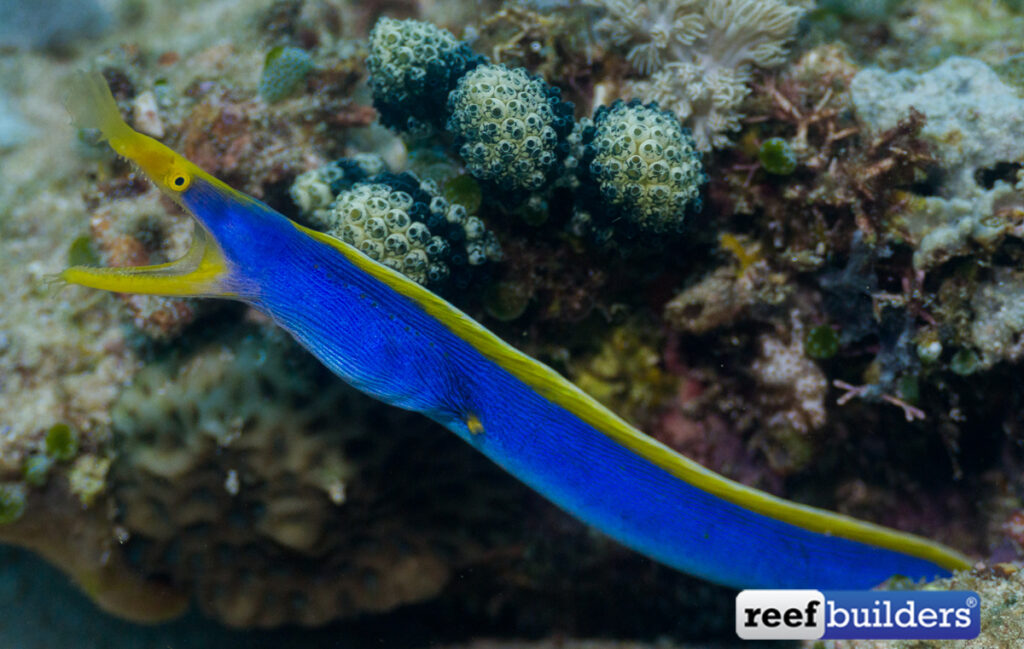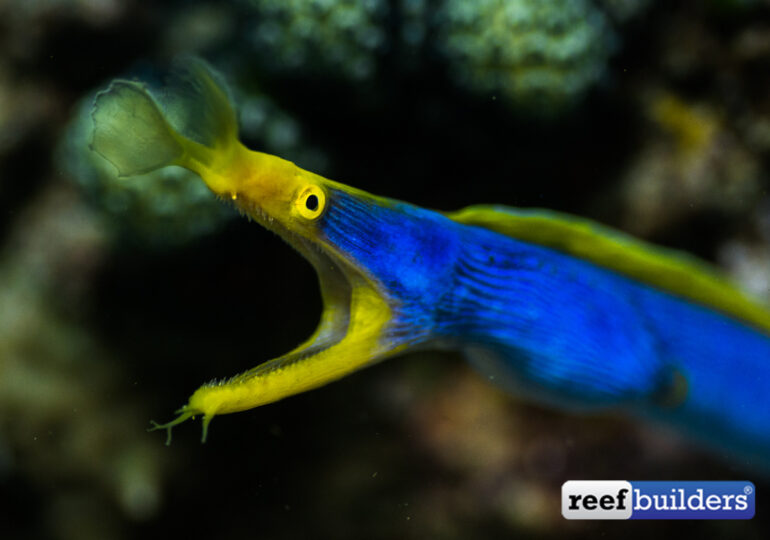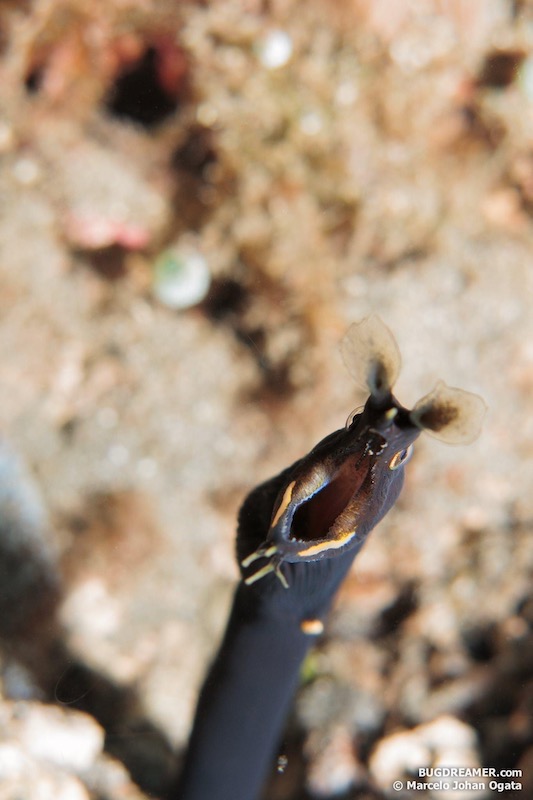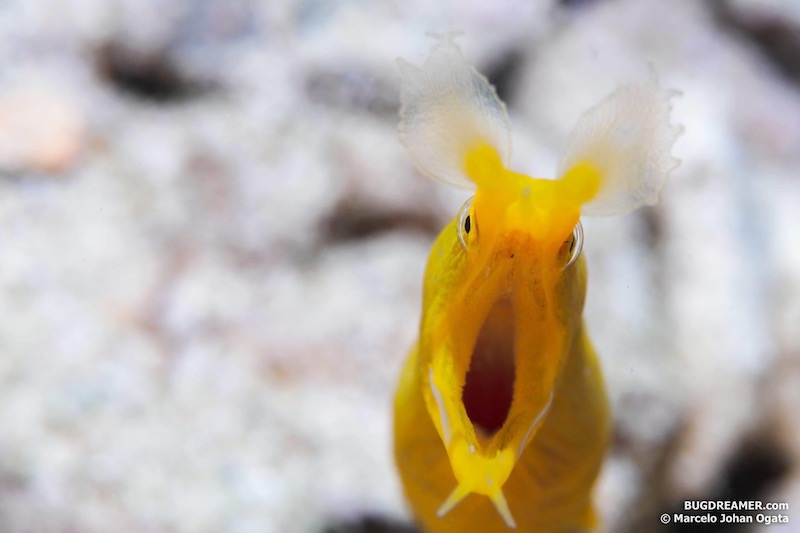The Blue Ribbon eel (Rhinomuraena quaesita) is one of the most attractive underwater creatures with their tiny dragon head and long elegant bodies. A favorite subject for underwater photographers and an aquarium creature best left on the reef. Keeping ribbon eels is reserved for only the most advanced saltwater aquarists.
These iconic eels get their name from the thin ribbon-like dorsal markings and their undulating swimming pattern. Most of the time you will spot only the head of a ribbon eel, but if you’re lucking enough to see these dragon swimming you will quickly notice how they get their name.
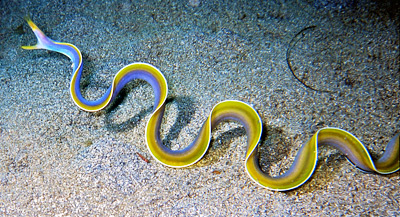
Apperance
Ribbon eels can stretch up to 4 feet in maximum length and adult ribbon eels have a blue body with a yellow dorsal fin. One interesting characteristic of the ribbon eel (R. quaesita) they are a protandrous hermaphrodite (males transition into females) just like clownfish.
As the ribbon eel transitions from the juvenile phase into an adult male or female, their color patterns change. The iconic blue coloration is only one phase (adult male). At one time it was thought that ribbon eels of each color phase actually represented different species altogether but we know now it is only part of growth transitions.
Juveniles are black with a yellow dorsal fin. In males, the black coloration changes to blue with yellow on the lower jaw, snout, and dorsal fin. Females are bluish-/greenish-yellow to solid yellow.
Ribbon eels are also very recognizable with its gaping mouth and flared nostrils. They also have three fleshy filaments extend from the tip of the lower jaw, and a single filament is present on the snout.
On the reef, you usually only spot little ribbon eel heads sticking out of rocks and caves. They are found posturing aggressively displaying their sharp little teeth, but this is mostly for show, and ribbon eels quickly retreat into their hole if you get too close.
Ribbon Eels in Aquariums
Ribbon eels should only be kept by the most advanced aquarist due to their special care requirements. It is not recommended to house a ribbon eel with other tankmates. Instead, keep them in a dedicated aquarium ideally a 55g tank or bigger.
Ribbon eels like to hide in holes and require several inches of sand topped with rubble to allow burrowing as well as liverock arranges in a honeycomb fashion for ample hiding spots. Artificial cave-like structures, such as PVC pipe, can be provided for refuge, and to keep these escape artists from slithering out of a tank you will need to ensure you have a tightly sealed lid.
